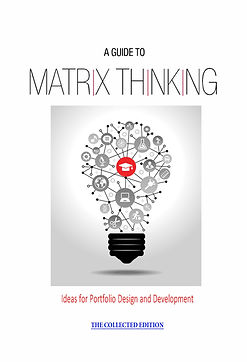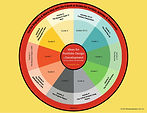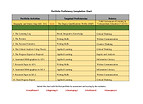
Assessment Tools
Only the whole is the truth
Hegel
Portfolios, Proficiencies and Rubrics
A portfolio is a collection of texts in the form of assignments or artifacts that demonstrates college-level knowledge, ability and skills. Portfolios are primarily used to assess achievement and proficiency (learning outcomes). Portfolios provide you with an opportunity to develop and document your interests and experiences. They reflect what you’ve learned (see Endnote 11).
Just as there are many kinds of texts, there are various types of portfolios. Portfolios can be created in many ways, and the number of texts and mediums you can use are almost endless. A portfolio can be a collection of essays, reports, stories, photographs, sketches, paintings, musical recordings, spreadsheets and/or presentations. These texts can be housed in a notebook, folder, gallery, digital file or on a website. In situations that involve an official assessment of a portfolio, you will be provided with a list of the specific content or texts to be collected in the portfolio and the criteria by which it will be assessed.
Portfolios are typically assessed using a rubric(s). A rubric is a set of criteria used to judge the materials in a portfolio. Rubrics can be very specific or general in nature. There are a wide variety of rubrics, but the general intent of any rubric is to provide a clear description of the levels of performance by which items in a portfolio are assessed. Evaluating portfolios is a subjective process. In order to create consistency in determining what you should be expected to know and do upon earning a higher education, the Lumina Foundation proposes The Degree Qualifications Profile (see DQP Matrix), highlighting the learning outcomes in which college students should be proficient. They are specialized knowledge, broad, integrative knowledge, intellectual skills, applied learning and civic learning. You can review the DQP assignment library here.
The Association of American Colleges & Universities created Liberal Education and America’s Promise (LEAP), a national initiative to promote liberal education. It has established a set of Essential Learning Outcomes similar to DQP and a set of Principles of Excellence that help improve teaching and learning. The assessment part of the LEAP initiative is called the Valid Assessment of Learning in Undergraduate Education (VALUE). The VALUE rubrics complement DQP and provide us with transparent ways to assess learning. The VALUE rubrics include Inquiry and Analysis, Critical Thinking, Creative Thinking, Written Communication, Oral Communication, Quantitative Literacy, Information Literacy, Reading, Teamwork, Problem Solving, Civic Knowledge and Engagement – Local and Global, Intercultural Knowledge and Competence, Ethical Reasoning and Action, Global Learning, Foundations and Skills for Lifelong Learning and Integrative Learning.
Ideas for Portfolio Design and Development



The guides below offer ideas, activities and sample texts for the development of a Humanities (CPL) portfolio that uses Matrix Thinking, Biographies and Matrix Maps. The portfolio guides describe the history, conventions and cultural significance of the various genres and texts that will help you demonstrate and document what you learn for assessment. The guides provide writing strategies, exercises and a variety of creative activities based on the DQP learning outcomes to be mastered and assessed using VALUE rubrics that one can adopt or adapt. To develop a portfolio, you simply select the guides that you need and complete the assignments listed in the Matrix Maps and Biographies. You select your own Matrix Map and Biography based on your interests and/or career goals. To explore your learning options, review Guide 1 below or click the icons under Selections.
Guide 1: Learn how to use a Learning Log.
Guide 2: Learn how to write a Resume.
Guide 3: Learn how to write a Personal Narrative.
Guide 4: Learn how to write a Critical Analysis using Theory.
Guide 5: Learn how to write Progress Reports and Proposals.
Guide 6: Learn how to write an Annotated Bibliography in APA.
Guide 7: Learn how to write a Research Paper in APA.
Guide 8: Learn how to write an Annotated Bibliography in MLA.
Guide 9: Learn how to write a Research Paper in MLA.
Guide 10: Learn how to use grammar and punctuation effectively.
Guide 11: Learn how to edit and present a portfolio.
Bonus Guide 12: Research and Writing with Matrix Maps
To view the quiz instructions for each guide, click the items underlined in red.